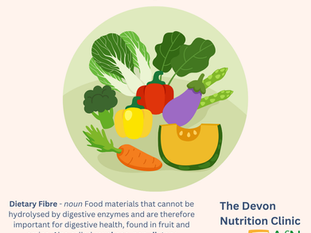
Author: Rachael Allen (Associate Registered Nutritionist)

Hydration is often overlooked, but it is as important as the nutrients from the food you consume. Water is an essential nutrient needed to sustain life (1). The adult male body consists of approximately 60% water and 50-55% in females (2).

Why is hydration so important?
Optimum hydration supports many bodily functions, such as thermoregulation (body temperature control), gastrointestinal function (keeping you regular), kidney and heart function. There are also positive effects on the skin's appearance, reduction in headaches, increased capacity for physical activity, and sharper cognitive performance (1).

How much?
How much water should you consume each day varies from person to person, depending on physical activity levels, gender, age, environment temperature, sweat levels, and clothing, to name a few (1). The guidelines from the European Food Safety Authority state 1.5-2 liters for females and 2-2.5 liters for males (2). The UK Government Eatwell Guide recommends 6-8 glasses per day (3). However, this guidance is generic for anyone aged over 2 years old.

What counts?
Fluid intake includes milk, tea, coffee, squash, and water. Fruit juice should be limited to 150ml per day due to the potential for dental decay and sugar content (3). There are also varying amounts of water in foods, for example, lettuce and strawberries contain 90-99% water, whilst bananas and avocados contain 70-79% and oils contain 0% (1). Fluid provides 80% of your daily intake with 20% coming from foods (1).
If you struggle to drink water maybe try adding fruit and herbs to ice water or trying a different water bottle.

Am i hydrated?
The easiest way to monitor your hydration status is to check the colour of your urine (2). Pale urine is classified as having normal hydration status, a more yellow shade usually indicates a decline in hydration status. You should also consider any medication you have taken when using this method to assess hydration status.
The elderly may have a reduced sense of thirst sensation along with reduced appetite, mobility or cognitive issues which may affect their ability to maintain hydration (1, 2). Kidney function also reduces with age (2). Special attention should be given to monitoring fluid intake in this age group.
Dehydration can have serious consequences and should never be ignored, NHS symptoms are (4):
feeling thirsty
dark yellow, strong-smelling pee
peeing less often than usual
feeling dizzy or lightheaded
feeling tired
a dry mouth, lips and tongue
sunken eyes

How can I increase my intake?
Adding a glass of water to each meal and snack time is an easy place to start, once you have added in a morning and nighttime glass you are well on your way to meeting government recommendations.
Finding the perfect reusable bottle and taking it out with you can help to increase intake out of the home.
Creating a simple illustration to colour in to track your intake can act as an effective visual cue.
Take home message
Your hydration requirements are as unique as you are, factors such as age, gender, physical activity levels, and dietary intake influence your hydration status. Making simple changes such as water with meals and carrying a refillable bottle can help to increase intake. Dehydration should never be ignored.
Was this blog post helpful? What would you like to see next? Please leave any comments or reflections below.
Please register your interest via the website for personalised evidence-based advice and support.
Are you hydrated?
Yes
No
Not sure
References
Popkin, B. M., D'Anci, K. E., & Rosenberg, I. H. (2010). Water, hydration, and health. Nutrition reviews, 68(8), 439–458. https://doi.org/10.1111/j.1753-4887.2010.00304.x
EFSA Panel on Dietetic Products, Nutrition, and Allergies (2010). Scientific Opinion on Dietary reference values for water. EFSA Journal, 8(3):1459. https://doi:10.2903/j.efsa.2010.1459.
Public Health England (2018). The Eatwell Guide. Available at: https://assets.publishing.service.gov.uk/media/5ba8a50540f0b605084c9501/Eatwell_Guide_booklet_2018v4.pdf
NHS (2022). Dehydration. Available at: https://www.nhs.uk/conditions/dehydration/




